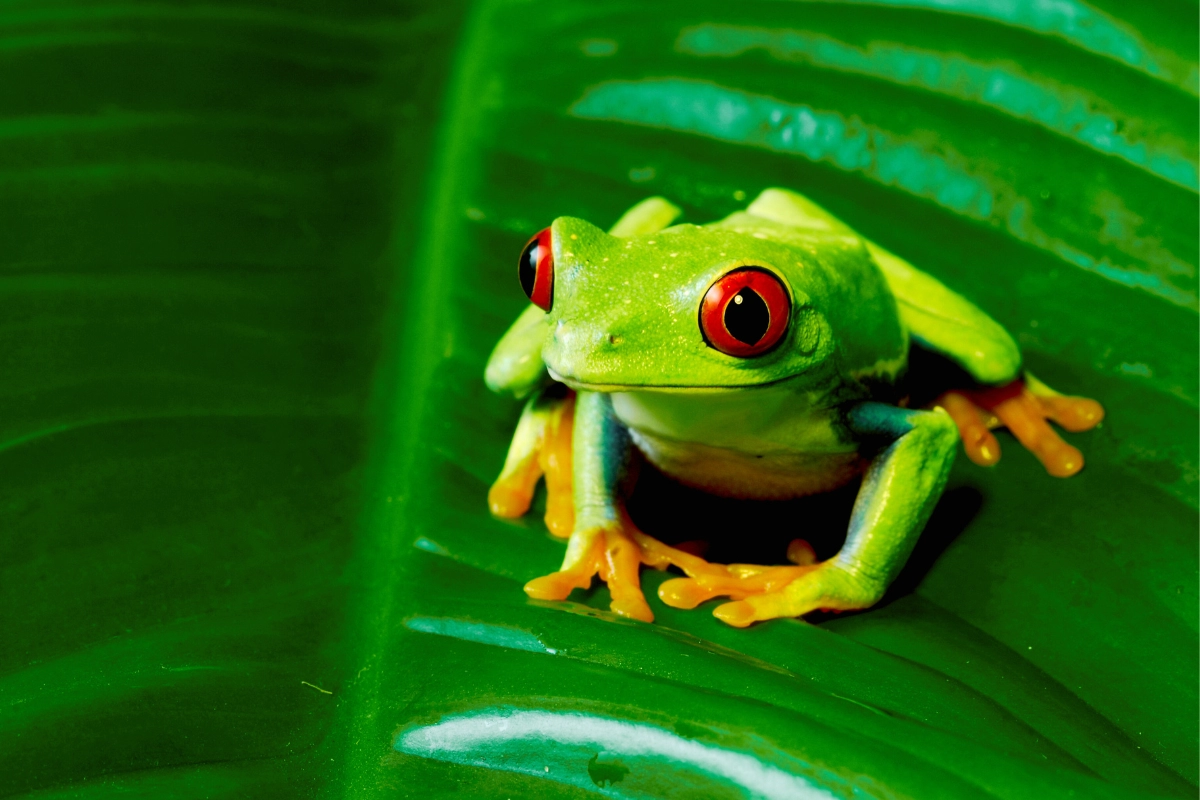If you’re considering keeping a tree frog as a pet, here’s what I’ve learned to help you get started. First, ensure you have a spacious terrarium with plenty of height, as tree frogs love to climb. Maintain a temperature between 70-85°F and a humidity level around 50-80%, as they thrive in moist environments. Use safe substrate like coconut fiber, add plants for hiding spots, and provide a shallow water dish for soaking. Feeding is simple—just offer small insects like crickets dusted with calcium powder. With these basics, you’ll have a happy, healthy tree frog!
If you’re interested in how to keep a tree frog as a pet, following this guide will help you create a thriving, comfortable home for your amphibian friend. I put together this tutorial to share the essential steps I’ve learned, ensuring your pet enjoys a healthy and enriched life. Tree frogs make fascinating pets, and with the right setup and care, you’ll enjoy a unique bond with these captivating creatures.

To successfully follow this guide on how to keep a tree frog as a pet, you’ll need the following items:
- Terrarium: Choose a tall, glass enclosure with a secure lid, as tree frogs are natural climbers.
- Substrate: Use coconut fiber or moss to retain moisture. Avoid gravel or sand, as these can harm your frog if ingested.
- Plants and Branches: Include live or artificial plants and branches to mimic a natural habitat.
- Temperature and Humidity Control: A digital thermometer and hygrometer help maintain the ideal temperature (70-85°F) and humidity (50-80%).
- Water Dish: Use a shallow dish with clean, dechlorinated water for soaking.
- Insects: Crickets and small mealworms are ideal for feeding; dust them with calcium powder for added nutrition.
For alternatives, you could use plastic enclosures instead of glass, though glass is often recommended for better visibility and temperature control.
Step 1: Set Up the Terrarium
Begin by choosing a terrarium that meets your tree frog’s needs. Tree frogs love to climb, so a tall enclosure is essential. A 10-gallon tank may be sufficient for a single small frog, but a 20-gallon tank or larger is ideal for multiple frogs or larger species. Ensure the tank has a secure, ventilated lid to prevent escapes and maintain proper airflow. Once your tank is ready, line the bottom with a substrate, like coconut fiber or sphagnum moss, which helps retain humidity and mimics the frog’s natural habitat.
Step 2: Add Plants and Climbing Features
Next, add branches, vines, and plants to the terrarium to provide climbing areas and hideaways for your tree frog. Use sturdy, natural branches that are safe and non-toxic, or purchase artificial climbing decorations designed for terrariums. You can also add live or artificial plants; live plants contribute to a natural feel and help maintain humidity levels. Arrange these features in a way that allows your frog to explore and climb while also creating hiding spots to reduce stress.
Step 3: Control Temperature and Humidity
Maintaining the right temperature and humidity is crucial to your frog’s health. Aim for a temperature range of 70-85°F, with a slight drop at night to simulate natural conditions. You can achieve this using a low-wattage heat lamp or under-tank heater, but avoid excessive heat. Monitor humidity with a hygrometer, keeping levels between 50-80%. Use a spray bottle to mist the enclosure daily, which helps keep humidity up and your frog hydrated.
Step 4: Provide a Water Source
Tree frogs need access to clean, dechlorinated water for soaking and hydration. Place a shallow water dish in the terrarium, ensuring it’s easy for the frog to enter and exit. Avoid deep bowls, as frogs can accidentally drown. Refresh the water daily to prevent bacteria buildup. Alternatively, some frog owners use a small water feature with a pump, which can add humidity and provide gentle water movement; just ensure it’s safe and not too strong for the frog.
Step 5: Feed Your Tree Frog
Tree frogs are insectivores and thrive on a diet of live insects. Feed them small crickets, mealworms, or waxworms, offering appropriately sized insects based on your frog’s size. Dust the insects with calcium powder a few times a week to support healthy bones. Feed adult frogs every 2-3 days, while younger frogs may require daily feedings. Place the insects in the tank and allow the frog to hunt, which helps stimulate their natural instincts.

Conclusion
I hope you found this guide on how to keep a tree frog as a pet helpful and inspiring! Creating a safe and enriching environment for these unique pets is something I’m passionate about, and it’s rewarding to share that with others. If you enjoyed this tutorial or have additional tips, please share your thoughts in the comments. Don’t forget to share this article with others who may be considering a tree frog as a pet!
FAQ
What is the difference between a tree frog and a frog?
Tree frogs are a type of frog specifically adapted to life in trees. They typically have toe pads that help them climb and are found in environments with plenty of vegetation. In contrast, other frogs may live near ponds, rivers, or on the ground and often lack the sticky toe pads of tree frogs.
Do tree frogs lay eggs?
Yes, tree frogs lay eggs. They typically lay them in water, such as small pools or even in water-filled leaves, depending on the species. The eggs hatch into tadpoles before they metamorphose into adult frogs.
What does it mean to be called a tree frog?
Being called a “tree frog” refers to a frog’s lifestyle and habitat. Tree frogs are typically found in forests, jungles, or other areas with abundant vegetation. Their toe pads are specialized for gripping branches and leaves, making them excellent climbers.
Is a milk frog a tree frog?
Yes, a milk frog, such as the Amazon Milk Frog, is a type of tree frog. Known for the milky secretion they produce as a defense, milk frogs are arboreal and have the climbing adaptations common to other tree frogs.
Why is my green tree frog not eating?
A green tree frog may stop eating due to stress, illness, or environmental factors like improper temperature or humidity. Ensure their enclosure conditions are optimal and monitor their behavior. If the issue persists, consider consulting a veterinarian experienced with amphibians.

